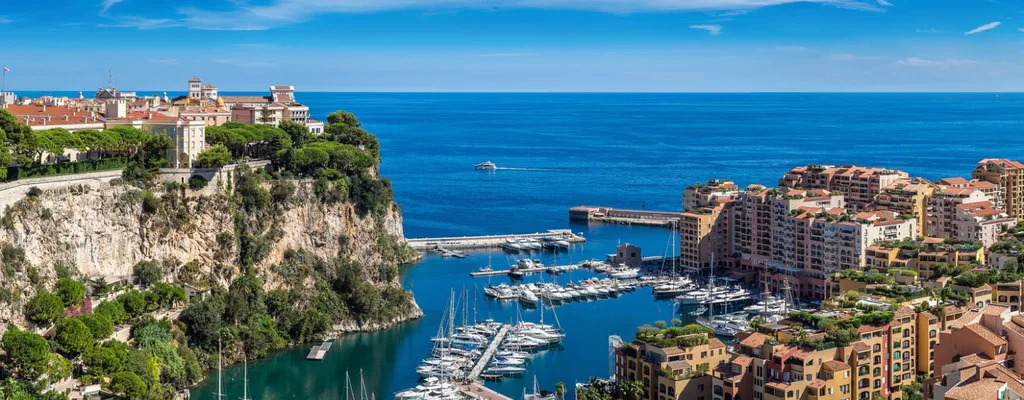IHO’s HISTORY – FORMATION OF THE INTERNATIONAL HYDROGRAPHIC BUREAU
E.Pedron with S.Rivella
MONACO-MONTECARLO. The Principality of Monaco is a fervent actor in the global sustainability themes. The little state is one of the most important member of the IHO, International Hydrogeographic Organisation. Based in Monaco, the International Hydrogeographic Organization is an intergovernmental consultative and technical organization that was established in 1921 to support safety of navigation and the protection of the marine environment. The official representative of each Member Government within the IHO is normally the national Hydrographer, or Director of Hydrography, who, together with their technical staff, meet at 5-yearly intervals in Monaco for an International Hydrographic Conference. The Conference reviews the progress achieved by the Organization through its committees, sub committees and working groups, and adopts the programmes to be pursued during the ensuing 5-year period. A Directing Committee of three senior hydrographers is elected to administer the work of the Organization during that time. The Directing Committee, together with a small international staff of technical experts in hydrography and nautical cartography, makes up the International Hydrographic Bureau in Monaco. The IHB is the secretariat of the IHO, coordinating and promoting the IHO’s programmes and providing advice and assistance to Member States and others. International cooperation in the field of hydrography began with the first International Maritime Conference held in Washington in 1889, followed by two others in Saint Petersburg, in 1908 and 1912. In 1919, twenty-four nations met in London for a Hydrographic Conference, during which it was decided that a permanent body should be created. The resulting International Hydrographic Bureau began its activity in 1921 with eighteen Member States (including the British Empire then composed of the United Kingdom and Australia). At the invitation of H.S.H. Prince Albert I of Monaco, a noted marine scientist, the Bureau was provided with headquarters in the Principality of Monaco. The Hidrographic Organization has remained in Monaco ever since, thanks to the continuing and very generous support of the Prince’s successors. In 1970, an intergovernmental Convention entered into force, which changed the Organization’s name and legal status, creating the International Hydrographic Organization (IHO), with its headquarters (the IHB) permanently established in Monaco as well. The Organization currently has a membership of eighty-five maritime States, with several others in the process of becoming Members. Prince Albert I was also the “instigator and promulgator” of the oceanographic science he contributed to create. He founded the Oceanographic Institute Foundation Albert I, Prince of Monaco, a private foundation recognized of public utility, established in 1906. It has two buildings: The Oceanographic Institute of Paris, now renamed Ocean House, and what became the world-renowned Oceanographic Museum of Monaco.

This includes an aquarium, a museum, and a library, with research facilities in Paris. Prince Albert I owned four, increasingly impressive research yachts, Hirondelle, Princess Alice, Princess Alice II and Hirondelle II. Accompanied by some of the world’s leading marine scientists, he travelled the length and breadth of the Mediterranean, recording numerous oceanographic studies, maps and charts. In 1896, on an oceanographic survey of the Azores he discovered the Princess Alice Bank. In 2006, Prince Albert II of Monaco, in the footsteps of his great-great-grandfather, visited the Arctic reaching the North Pole on 16 April so that he could assess the effects of global warming on the weakening ice. Following this expedition, the Prince decided to create the Albert II of Monaco Foundation, dedicated to environmental protection. On 5 January 2009, the Prince set off on a second 17-day polar expedition to Antarctica travelling from the West to the East.

Initiated on the invitation of the international scientific community, Prince Albert II’s 2009 Antarctic mission had three main objectives: To alert international public opinion on the dangers of global warming and urge everyone to reduce their greenhouse gas emissions; to promote scientific research in the Polar regions by lending support to the men and women working there; to bring attention to article 2 of the Madrid protocol to the Antarctic Treaty, which entered into force on 14 January 1998, and which stipulates that “the Antarctic is a natural reserve devoted to peace and science” . Among its various missions, like the Because the Oceans during the 2015 COP21 in Paris, on Summer 2016 the Foundation, which is celebrating its tenth anniversary, presented the winners of the 2016 Biodiversity, Water and Climate Change awards.Moreover, I guess not many people know the origin of the “Camp Monaco Prize ”, named after the hunting camp established near Yellowstone National Park in 1913 by His Serene Highness, the Sovereign Prince of Monaco Albert II’s great, great grandfather, Prince Albert I, and William F. “Buffalo Bill” Cody.

In 2016, the mission organized by the “Buffalo Bill Center of the West’s Draper Natural History Museum, the “University of Wyoming’s Biodiversity Institute”, the “Prince Albert II of Monaco Foundation”, and of the “Prince Albert II of Monaco Foundation-USA”, resulted in extensive press coverage and discussions of the American wilderness. First awarded in 2013, and presented every three years, the $100,000 prize facilitates integrated scientific research and public education initiatives in the Greater Yellowstone Ecosystem that inform, inspire, and enhance biodiversity conservation here and around the world. The award-winning project, “Biodiversity of the longue durée: melting ice and the synergy of humans, bison, bighorn sheep, and whitebark pine in Greater Yellowstone”, seeks to examine newly discovered plant, animal, and archaeological remains in retreating ice fields. The plan is to develop a broader perspective and better understanding of environmental change and past human activity in the high elevations of the Greater Yellowstone Ecosystem.






